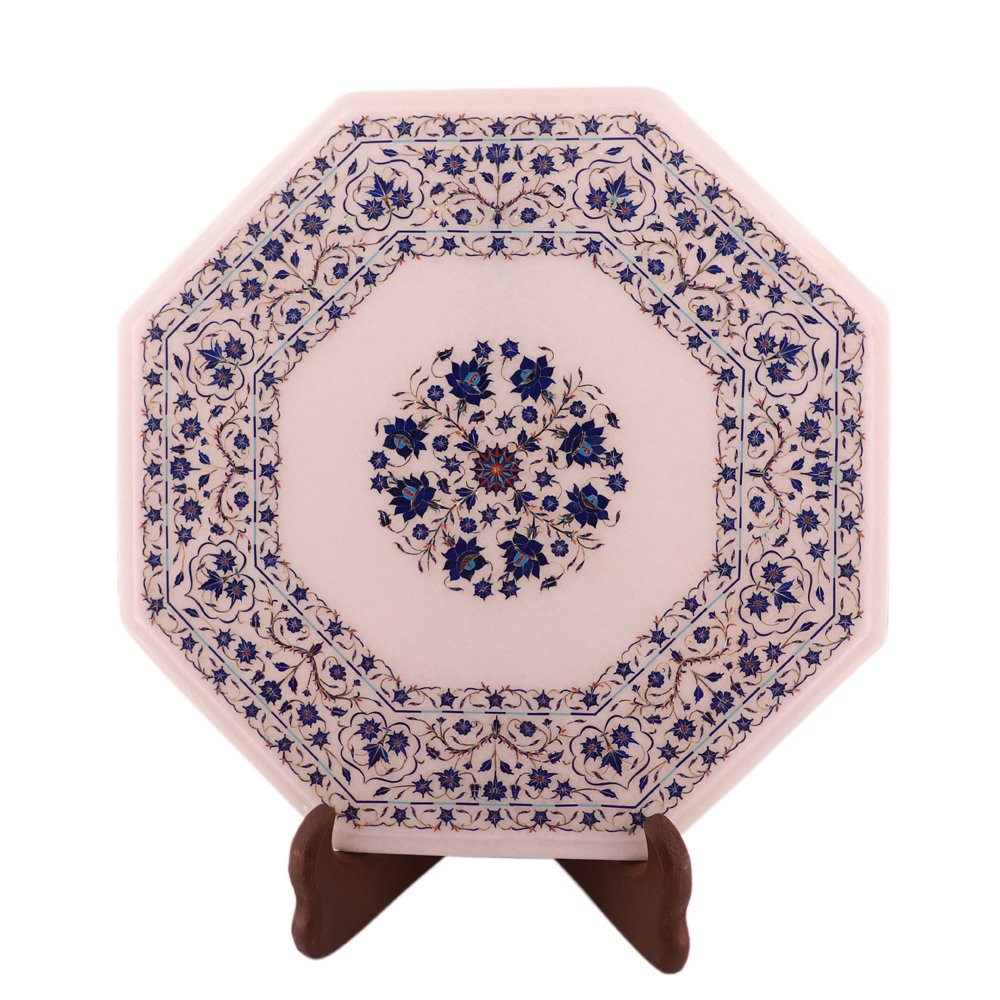
Agra, a city synonymous with the Taj Mahal, is also renowned for its exquisite marble inlay work. Marble inlay table tops from Agra represent a confluence of meticulous craftsmanship, artistic heritage, and historical significance. As an art form, they offer unrivaled elegance and aesthetic value, making them highly sought after by collectors and connoisseurs worldwide. This essay aims to persuade the audience of the timeless worth and cultural importance of these artistic marvels.
Originating during the Mughal era, marble inlay work, known as “Pietra Dura,” involves embedding semi-precious stones into marble to create intricate patterns. The technique reached its zenith during the reign of Emperor Shah Jahan, who commissioned the Taj Mahal, adorned with exemplary marble inlay. This historical significance imbues each table top with a rich cultural narrative, making it more than just a piece of furniture—it is a slice of history.
Creating a marble inlay table top is a labor-intensive process that demands unparalleled skill and precision. Highly trained artisans spend countless hours meticulously selecting, cutting, and setting stones like lapis lazuli, malachite, and mother of pearl into the marble base. The precision required ensures that each piece is not only durable but also harmonious in design, thereby making it a standalone work of art. This extraordinary craftsmanship guarantees that every table top is unique and irreplaceable.
The beauty of marble inlay table tops lies in their dual nature—they are both aesthetically stunning and functionally practical. The intricate patterns created by the embedded stones reflect light in mesmerizing ways, turning each table into a focal point in any room. Additionally, the durability of marble ensures longevity, making these tables not just decorative pieces but also functional furniture items capable of withstanding the test of time.
Marble inlay work is more than just a traditional craft; it is an economic lifeline for many families in Agra. By investing in these table tops, one supports not only the preservation of an ancient art form but also the livelihoods of artisans dedicated to their craft. This ethical dimension adds another layer of value to each piece, creating a win-win situation for both the buyer and the creator.
Despite their beauty and value, marble inlay works face numerous challenges, including the modernization of furniture production methods and the dwindling number of skilled artisans. Preservation efforts led by cultural organizations and government initiatives are crucial to safeguarding this heritage. Buyers can also play a role by opting for genuine, handmade pieces over mass-produced imitations. Supporting authentic craftsmanship ensures the survival of this art form for future generations.
Marble inlay table tops from Agra are not merely ornate slabs of stone; they are dynamic pieces of history, culture, and exceptional craftsmanship. Their rich historical roots, remarkable artistry, and dual aesthetic-functional value make them unparalleled in the realm of decorative arts. By choosing to invest in these masterpieces, one not only acquires a beautiful and functional item but also supports an endangered tradition, thereby contributing to its preservation and continuation.
Marble inlay is an intricate craft that involves embedding pieces of colored marble or other materials into a marble base to create decorative patterns, designs, or images. This technique, often associated with traditional Indian art, especially in structures like the Taj Mahal, involves meticulous cutting and fitting of the inlaid pieces, showcasing a high level of craftsmanship. It can be used in various applications, including tabletops, flooring, and wall decorations, adding elegance and sophistication to the overall aesthetic.
Subscribe to receive inspiration, product updates and special offers